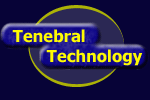
 |

Product FeaturesServicesProgramming:Information |
Production Automation Automating Production The SPM family of products is designed to provide the complete framework needed to automate production tasks. Using XML to content tag data allows the time consuming tasks of layout, formatting, and finding aid generation to be reduced to a simple "push of a button". Creating different products with different styles and organization transforms from a very manual repetitive task into a one time analysis and definition of publishing rules. Our framework provides the tools and interfaces needed to automate these rules. Automation Philosophy If a rule can be established it should be automated. A typesetting expert should establish typesetting rules. This ensures that the print output is consistent. If more than one person can change layout or formatting then the end result will eventually look like more than one person designed the output. Layout is a wasteful task that should be eliminated. What should be automated Often the easiest way to automate print production is to move from interactive layout to batch composition. With the quality of batch pagination systems that are available today, 100% automated composition can be achieved. With proper XML Content tagging, it is easy to extract heads and other organizational items to produce Table of Contents, extract references to produce cross reference tables, and even keywords can be extracted to produce index components. Below is a typical Simple workflow:
|
|
By automating you can easily eliminate repetitive work:
Complicated workflows and workflows with print and online delivery benefits even more:
In addition, using XML to content tag allows the system to report on missing content during the authoring stage which can help eliminate some proofreading steps. Serving the websites direct with XML completely eliminates the process of converting to HTML. Often this process fails or has quality control issues. This also allows the Author to view the web output during the content creation. This makes it much easier to get graphic components or tabular material integrated properly for both print and online. Lastly, the system integrates link management into the authoring. The database keeps track of links and provides a consistent referencing method that insures links refer to database content no matter how it is edited or renamed. This helps eliminate the steps usually required at the end of the process to resolve broken links. |
Solutions | Services | Support | Partners | Company | Contact | © Copyright 1994-2007, Tenebral Technology, Inc. • All Rights Reserved |